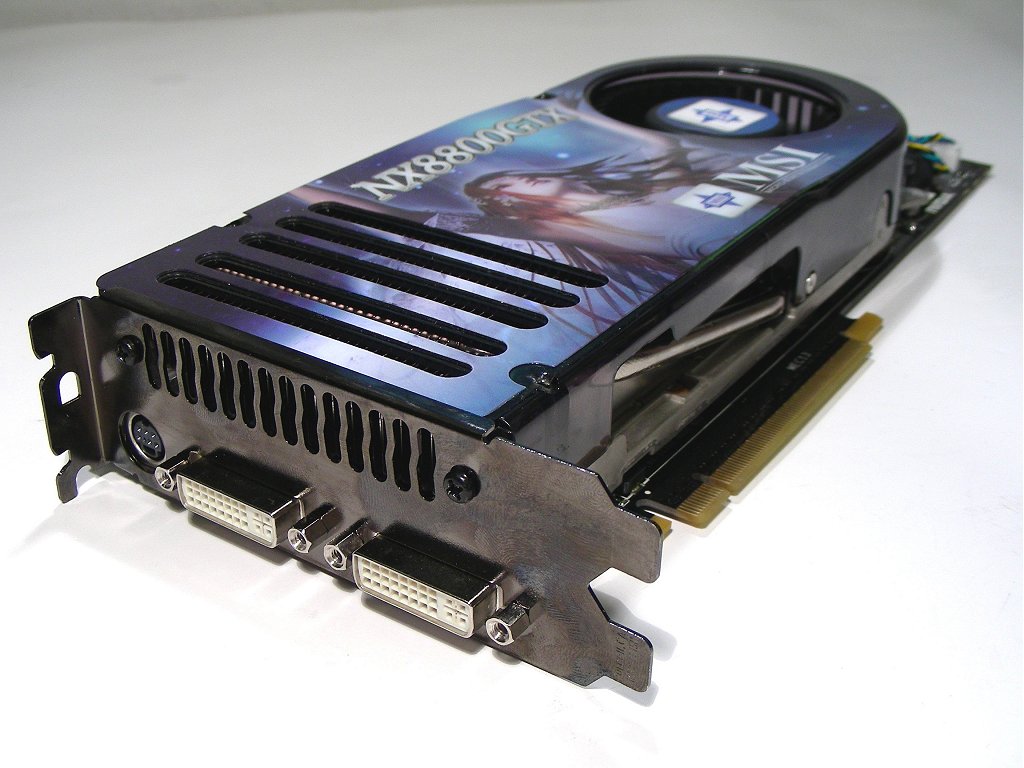Final thoughts
The GeForce 8800 GTX is an amazing product, delivering more than was expected or anticipated in every possible way. The previous single card performance king was the Radeon X1950XTX and the 8800 GTX simply poked fun at it. While we all expected the 8800 GTX to be faster, we never expected to find the kind of gains found in new games such as Company of Heroes, Half Life 2 and Serious Sam 2, delivering up to 2.5x more performance.
Past performance gains of 25% have been acceptable when moving from one generation to the next. However, because the GeForce 8800 GTX is so powerful, harnessing the power has proven to be somewhat difficult. Given the fact that the 8800 GTX is more than comfortable with a resolution of 2560x1600 with maximum graphics settings enabled, a 19" LCD just will not do it justice. In fact a 22" or even a 24" LCD is just nowhere near good enough to harness the raw power of the 8800 GTX. Rather, owners of these blistering fast new graphics cards will have to look at 30" LCD monitors that can support a native resolution of 2560x1600. This being the case, it hardly seems like a big deal shelling out $650 on the graphics card, when the LCD will cost significantly more.
A few drawbacks can be mentioned, although some of them go in hand with owning such an edgy piece of hardware. First, the 8800 GTX kind of makes street lights flicker upon powering up, and it will probably have a negative impact on your power bill. Ideally, the 8800 GTX could have been more like the Core 2 Duo, much faster than previous products while also requiring less power. Also as we had mentioned, purchasing a 8800 GTX to accompany your current hardware configuration is probably going to be a colossal waste of money unless you already own a very high-end system. For testing we used an Intel Core 2 Duo E6700 processor with 2GB of DDR2-800 memory, an ASUS P5B Deluxe motherboard and a 700w OCZ power supply.
While this is very close to the best hardware configuration you can get for gaming at the moment, I am sure had we overclocked the E6700 processor, the 8800 GTX would have pulled even further ahead of the X1950XTX. Using a slower processor would greatly diminish the performance margin between the 8800 GTX and X1950XTX, eliminating the need for this new graphics card.
The GeForce 8800 GTX is a serious achievement and an amazing leap forward in technology, and the best part is, it's only getting better with the release of Windows Vista and DirectX 10 gaming titles. Also you should expect to see further performance enhancements with upcoming drivers releases, as developers learn the new GPU better. Our benchmarks definitely showed titles where performance gains are possible (not that they were necessary though).

There is much more to be said about the GeForce 8 series and we will continue to explore the wonders of this new graphics card over the coming weeks and months, but for now it is clear that the GeForce 8800 GTX is the new and undisputed heavyweight champion. While this MSI implementation is nothing exciting as it is based largely on the Nvidia reference design, it is an early production version of a killer product. Given how powerful the G80 is, I have high hopes for the G84, which will drive the latest generation of mid-range performance graphics cards from Nvidia. AMD/ATI can't be happy.
